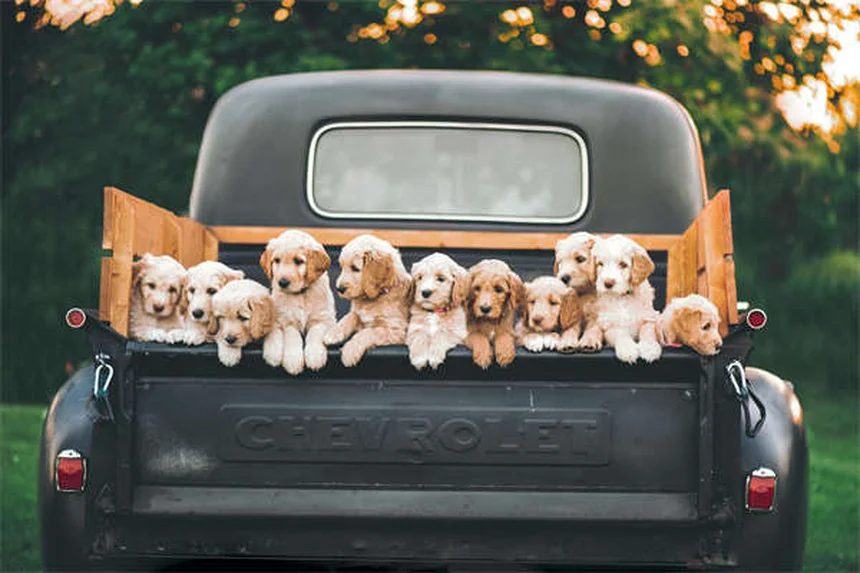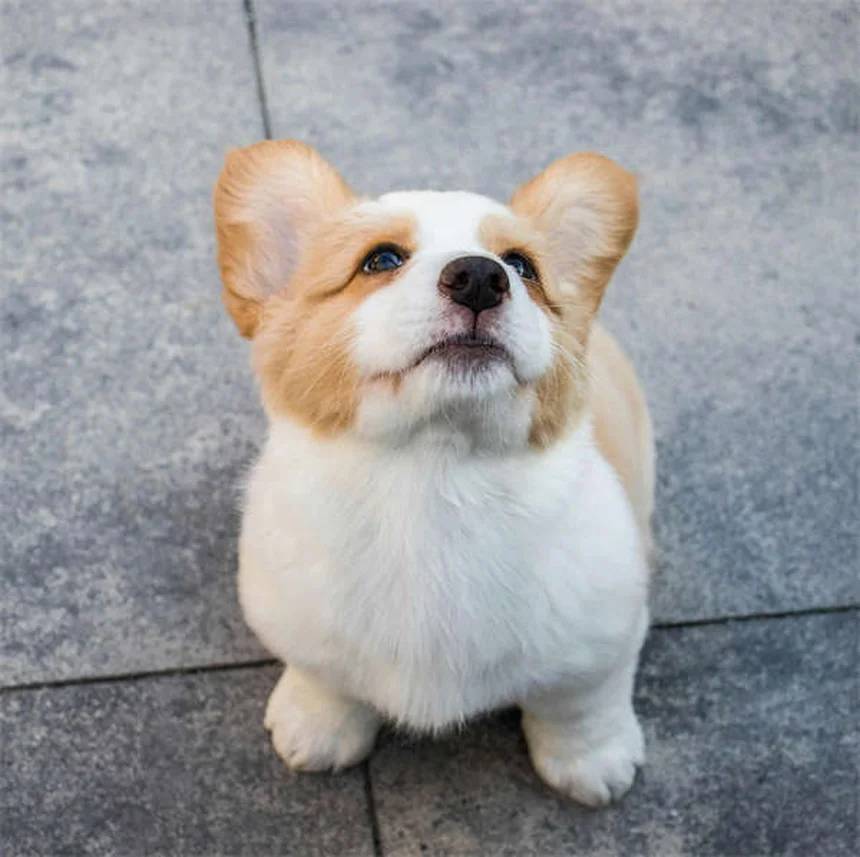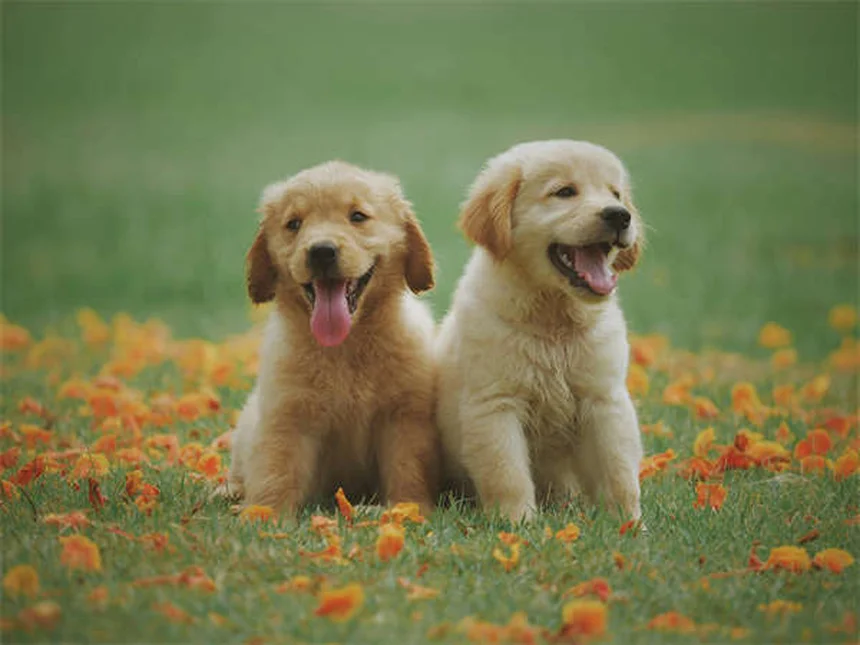Advertisement
How long do chinchillas live? The answer might surprise you! While their wild cousins typically live just 6 years, pet chinchillas regularly reach 10-15 years - with the record holder hitting an incredible 29! I've cared for these fluffy bundles for years, and let me tell you, their longevity comes down to three key factors: proper diet, smart habitat setup, and knowing their unique health needs.Think of your chinchilla as a tiny mountain athlete - their bodies evolved for the harsh Andes, meaning they have very specific requirements to stay healthy in your home. The good news? With some simple adjustments (like swapping those sugary pellets for unlimited timothy hay), you can help your furry friend live their longest, happiest life. Stick around - I'll walk you through exactly how to create the perfect environment for your chin to thrive!
E.g. :Rocky Mountain Spotted Fever in Dogs: Symptoms & Treatment Guide
- 1、Meet Your Furry Mountain Survivor
- 2、The Chinchilla Life Journey
- 3、Chinchilla Longevity Secrets
- 4、Common Health Pitfalls
- 5、Creating the Perfect Chinchilla Home
- 6、Social Needs of Chinchillas
- 7、Final Thoughts on Chinchilla Care
- 8、The Secret Social Lives of Chinchillas
- 9、Chinchilla Playtime Like a Pro
- 10、The Great Dust Bath Mystery Solved
- 11、Chinchilla Fashion: More Than Just Fluff
- 12、Chinchillas Through History
- 13、FAQs
Meet Your Furry Mountain Survivor
Picture this: a tiny ball of fluff surviving the harsh Andes Mountains - that's your chinchilla's wild ancestors! These tough little guys have evolved to handle extreme conditions, which explains why they make such resilient pets. Fun fact: nearly all U.S. pet chinchillas descend from just eleven animals brought over in the 1920s! Talk about a small family reunion!
From Andes to Your Living Room
Wild chinchillas face predators, food shortages, and extreme weather daily. No wonder they typically live just 6 years! But in your cozy home? They regularly hit 10-15 years, with the record-holder celebrating 29 birthdays! That's like a human living to 150!
Here's why your couch potato chin lives longer than its wild cousins:
- No predators eyeing them for dinner
- Veterinary care when they're sick
- Consistent meals (no foraging required)
- Climate-controlled comfort
The Chinchilla Life Journey
Baby Steps to Adulthood
Your chinchilla grows through clear life stages, just like humans. They start as "kits" (adorable baby chinchillas) nursing for 6-8 weeks. By 8 months - puberty hits! This is when they can start breeding (though we recommend waiting until they're older).
Ever wonder why some chins live longer than others? It's not just luck! While genetics play a role, your care makes the biggest difference. Think of it like cars - some come off the assembly line with better parts, but regular maintenance keeps any model running longer!
 Photos provided by pixabay
Photos provided by pixabay
Senior Chinchilla Care
As your chin ages, their needs change. Older chins might:
| Age | Common Changes | Care Tips |
|---|---|---|
| 8+ years | Less active, dental issues | Softer hay, lower platforms |
| 12+ years | Arthritis, vision loss | More vet checks, cage modifications |
Chinchilla Longevity Secrets
Diet: The Foundation of Health
Here's a shocking truth: most commercial chinchilla foods are about as healthy as feeding a kid nothing but candy! Your chin's digestive system evolved for roughage - think mountain grasses and tough plants.
The ideal diet includes:
- Unlimited timothy hay (the chinchilla equivalent of salad)
- Limited pellets (1 tablespoon daily max)
- Occasional treats like apple sticks
Did you know chinchilla teeth never stop growing? That constant chewing on hay keeps their teeth filed down naturally. No hay = dental disaster!
Exercise Like a Mountain Climber
Remember, your chinchilla's ancestors climbed rocky cliffs daily. Your pet needs that same level of activity! Here's how to keep them moving:
"But my chinchilla just sleeps all day!" you might say. That's because we often don't give them enough stimulation! Try creating a chinchilla playground with:
- Multiple levels in their cage
- A solid running wheel (no wire floors!)
- Safe chew toys
- Daily out-of-cage playtime
Common Health Pitfalls
 Photos provided by pixabay
Photos provided by pixabay
Senior Chinchilla Care
Here's something scary: chinchillas are masters at hiding illness. In the wild, showing weakness makes you predator bait. So how can you spot problems?
Watch for these subtle signs:
- Eating less hay
- Smaller, drier poop
- Less active than usual
- Weight changes
Finding the Right Vet
Not all vets are chinchilla experts - you wouldn't take your Ferrari to a bicycle mechanic! Before emergencies happen, locate an exotic pet vet. Ask them:
- How many chinchillas they treat annually
- Their experience with dental issues
- Emergency availability
Creating the Perfect Chinchilla Home
Cage Setup Essentials
Think of your chin's cage as their castle. It needs:
- Multiple levels for climbing
- Solid flooring (wire hurts feet!)
- Hiding spots (chinchillas need privacy)
- Ceramic food dishes (they'll chew plastic!)
 Photos provided by pixabay
Photos provided by pixabay
Senior Chinchilla Care
Here's a vital fact: chinchillas can die from heatstroke at temperatures we find comfortable! Keep their room between 60-70°F. In summer, consider:
- Marble tiles for cooling
- Frozen water bottles to lean against
- Air conditioning (fans don't help - chins don't sweat!)
Social Needs of Chinchillas
To Pair or Not to Pair?
Wild chinchillas live in colonies, so your pet might appreciate a friend. But introductions require care:
- Start with separate cages side by side
- Swap bedding to get them used to each other's scent
- Supervise initial meetings in neutral space
"What if they fight?" Good question! Some chins prefer solitude. Watch for chasing or fur pulling - signs they might not get along.
Final Thoughts on Chinchilla Care
With proper care, your chinchilla could be with you longer than some dogs! The keys are simple:
- Feed the right diet (hay is king!)
- Provide ample exercise
- Monitor health closely
- Create a stimulating environment
Remember, you're not just keeping a pet - you're giving a mountain survivor a luxurious retirement! And trust me, watching your chinchilla popcorn (their joyful jumping) makes all the effort worthwhile.
The Secret Social Lives of Chinchillas
More Than Just Fluffy Roommates
You might think your chinchilla is just a cute ball of fur, but these guys have complex social structures that would make middle school look simple! In the wild, they live in colonies of up to 100 individuals with strict hierarchies. Your pet still carries these instincts - ever notice how they "talk" with over 20 different vocalizations? From warning barks to affectionate chirps, they're basically running their own little soap opera in your living room!
Here's something fascinating: chinchillas actually groom each other as a bonding activity. If you've got a single chin, guess who gets promoted to chief groomer? That's right - you! They'll nibble your fingers gently (like giving you a mini manicure) as their way of saying "you're part of my tribe now." How's that for an honor?
The Great Chinchilla Communication Breakdown
Ever wonder what your chinchilla's weird behaviors mean? Let me translate some common chinchilla-isms for you:
| Behavior | What It Means | How You Should Respond |
|---|---|---|
| Standing on hind legs | "I'm curious! What's happening?" | Talk gently and offer a treat |
| Tail flicking | "I'm annoyed/startled" | Give them space |
| Soft teeth grinding | "Life is good!" (chinchilla purring) | Keep doing what you're doing |
Chinchilla Playtime Like a Pro
Beyond the Exercise Wheel
Sure, your chinchilla needs exercise, but did you know they also need mental stimulation? These guys are smarter than they look! In laboratory tests, chinchillas have shown problem-solving skills comparable to rats - which means your pet is probably plotting how to break into the treat jar when you're not looking.
Try these brain games to keep your chin sharp:
- Hide treats in toilet paper rolls (they'll love destroying them to get the prize)
- Create a dig box with chin-safe materials like shredded paper
- Rotate toys weekly to prevent boredom
- Teach simple tricks like coming when called (yes, really!)
The Art of Chinchilla-Proofing
You know how toddlers get into everything? Well, chinchillas are like furry toddlers with PhDs in mischief. Before playtime, scan the room for:
Electrical cords (they'll chew them faster than you can say "vet bill")
Small spaces behind furniture (chinchillas can flatten themselves surprisingly thin)
Toxic plants or cleaning supplies
Open toilets or buckets of water (they can't swim!)
Pro tip: Create a designated play area with cardboard boxes and safe chew toys. It's like building a chinchilla amusement park in your home!
The Great Dust Bath Mystery Solved
Why Dirt Makes Them Clean
Here's a head-scratcher: how does rolling in dust actually clean your chinchilla? It's all about physics! The fine dust particles absorb oils and dirt from their incredibly dense fur (they have about 60 hairs per follicle compared to our measly 1-2). Think of it like using a million tiny sponges to deep clean every strand!
But not just any dust will do. You need special chinchilla dust (usually made from volcanic pumice) that's the perfect texture. Regular sand is too coarse and can damage their fur and skin. It's like the difference between using a luxury spa treatment versus scrubbing with sandpaper!
Bath Time Do's and Don'ts
Want to make dust bath time extra fun? Try these pro tips:
Offer baths in the evening when they're most active (chinchillas are crepuscular, meaning dawn and dusk are their peak hours)
Use a heavy ceramic dish to prevent tipping (they get enthusiastic!)
Limit baths to 2-3 times weekly to prevent dry skin
Never use water! Their fur is so dense it can mold before drying completely
Watch for the "bath zoomies" - that sudden burst of energy after rolling is completely normal and hilarious to witness!
Chinchilla Fashion: More Than Just Fluff
The Science Behind That Incredible Fur
Did you know chinchilla fur is so dense that parasites can't even live in it? That's right - your chinchilla is naturally flea-resistant! Their fur evolved this way because in the high Andes, parasites would be deadly in the harsh conditions. It's like wearing a built-in bug-repellent parka!
But this amazing fur comes with responsibilities:
- Never get them wet (as mentioned earlier)
- Handle gently to avoid "fur slip" (a defense mechanism where they release clumps of fur)
- Brush only with a soft-bristled brush if needed
- Check regularly for mats behind ears and under arms
Seasonal Coat Changes
You might notice your chinchilla's fur changes slightly with seasons. In winter, they'll grow slightly thicker coats (even indoors!), while summer might see a bit of shedding. But here's the crazy part - wild chinchillas actually change color seasonally to blend with their environment! Domestic chins keep this trait to a much lesser degree, but you might notice subtle shifts in their shade.
What does this mean for you? Just be observant. Sudden fur changes can indicate health issues, while gradual seasonal variations are perfectly normal. It's like your chinchilla's way of keeping up with fashion trends!
Chinchillas Through History
From Royalty to Research
Here's a fun historical nugget: the Inca Empire considered chinchilla fur more valuable than gold! Only royalty could wear it, and hunting chinchillas was strictly controlled. Some historians believe this was one of the earliest wildlife conservation efforts - take that, modern environmentalists!
Fast forward to the 20th century, and chinchillas played a surprising role in scientific research. Their unique ear structure made them ideal for hearing studies, and their ability to survive high altitudes contributed to aerospace medicine. Who knew your cuddly pet was an unsung hero of science?
The Chinchilla Gold Rush
In the early 1900s, there was a literal "chinchilla gold rush" as fur farms popped up across America. A single chinchilla pelt could sell for up to $100 (about $1,500 today!). This led to wild chinchillas being hunted nearly to extinction before conservation laws stepped in.
Today, all pet chinchillas descend from those original farm animals. It's a sobering reminder of how human demand can impact species - and why responsible pet ownership matters so much. When you care for a chinchilla, you're helping preserve a species that was once on the brink!
E.g. :How long have your chinchillas lived? : r/chinchilla
FAQs
Q: What's the secret to helping my chinchilla live longer than average?
A: The biggest secret? Hay, hay, and more hay! I can't stress this enough - your chinchilla's digestive system is built for roughage, not the sugary pellets many pet stores sell. Unlimited timothy hay should make up about 90% of their diet. Beyond nutrition, daily exercise is crucial. These are mountain animals - they need space to run and climb! A multi-level cage with a solid running wheel (no wire floors!) and at least an hour of supervised playtime daily will keep their bodies and minds sharp. Lastly, find an exotic vet before you need one - chinchillas hide illness well, so having a professional who knows their quirks is essential.
Q: How can I tell if my chinchilla is getting old?
A: Great question! Chinchillas show aging differently than dogs or cats. Around 8 years, you might notice they're less eager to jump to high shelves (time to lower those platforms!). By 10-12 years, they may develop arthritis - I recommend adding ramps between cage levels. Watch their teeth closely too; seniors often need softer hay varieties. One client's chinchilla lived to 17 by switching to orchard grass hay at age 12! The key is observing small changes - less enthusiastic popcorn jumps, sleeping more, or being pickier about food can all signal it's time to adjust their care routine.
Q: Are chinchillas better alone or in pairs?
A: This depends on your chin's personality! In the wild they're social, but some pets prefer being solo stars. If you're considering a friend, introduce them slowly - I recommend the "neighbor method." Start with separate cages side by side for a few weeks, swapping bedding so they get used to each other's scent. When they seem curious (not aggressive) through the bars, try a neutral play area meeting. Watch for "fur slipping" (when they release tufts of hair) - that's stress! My rule? If they don't bond after 3-4 supervised sessions, they're probably happier alone. Either way, you'll need to double the cage size for two chins!
Q: What temperature is too hot for chinchillas?
A: Here's a shocker - anything above 75°F can be dangerous! These furballs evolved for cold mountain climates and can't sweat. I've seen too many heatstroke emergencies in summer. Keep their room at 60-70°F year-round. Pro tip: place ceramic tiles or frozen water bottles in their cage during warm months. And never rely on fans - they don't help chinchillas cool down. One client saved her chin by running the AC at 68°F all summer (worth the electric bill when you consider vet emergency costs!). Remember: if you're comfortable in a t-shirt, it's probably too warm for your chin.
Q: How often should I take my chinchilla to the vet?
A: At minimum, an annual checkup - but seniors (8+ years) need visits every 6 months. Here's why: chinchillas are prey animals who hide illness incredibly well. By the time they show obvious symptoms, problems are often advanced. I recommend finding an exotic vet who's treated at least 20 chinchillas - ask directly! Between visits, weigh your chin weekly (a kitchen scale works); sudden weight loss is often the first red flag. One client caught her chin's dental disease early because she noticed a 10g weight drop between monthly weigh-ins. That's the kind of vigilance that adds years to their life!























